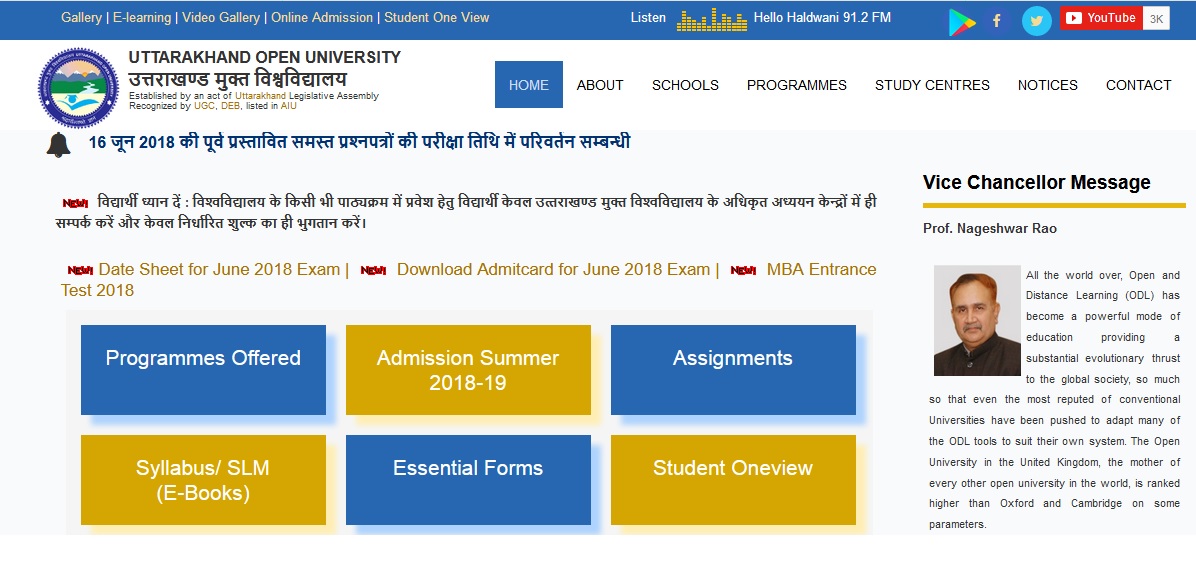MIT4001 Linux Administration M.A Question Bank : uou.ac.in
Name of the University : Uttarakhand Open University
Degree : M.A
Department : Information Technology
Subject Code/Name : MIT4001 Linux Administration
Year : II
Semester : IV
Document Type : Model Question Paper
Website : uou.ac.in
Download Model/Sample Question Paper : https://www.pdfquestion.in/uploads/uou.ac.in/4645.-MIT-4001.pdf
UOU Linux Administration Question Paper
M. Sc. IT-10 (Master of Science in Information Technology)
Fourth Semester Examination 2012
Time : 3 Hrs
Related / Similar Question Paper : UOU M.Sc Visual Basic Question Paper
Maximum Marks : 60
Note : the question paper has been divided in three sections – A, B and C.
Answer the questions as per instructions given in each section.
Section-A
span style=”text-decoration: underline;”>
(Long Answer’s Questions)
Answer any two questions. Each question carries 15 marks. 2 x 15 = 30
1. Discuss architecture of Linux Operating System. Differentiate between single user and multi user operating system.
2. Which are three levels of permissions of files and directories in Linux? Explain each of them.
3. Explain services in Linux. How services are selected for startup in Linux? How do we install and uninstall a new package?
4. What is a file system? Explain the steps to mount and unmount the file system manually and automatically. What is a network file system?

Section-B
(Short Answer’s Questions)
Answer any four questions. Each question carries 5 marks. 4 x 5 = 20
MIT-4001 Page 2
1. List the steps used to create a working multi OS system that include Linux and windows XP.
2. Write the characteristics of ext2 file system with suitable diagram.
3. Explain the bootstrapping.
4. Differentiate between SetUID and SetGID.
5. Explain quota management in file system
6. What is the purpose of shadow password files-
7. What is init service- Differentiate between inetd and xinetd processes.
8. What is X-windows-
Section-C
(Objective Type Questions)
Answer all questions. Each question carries 01 mark. 10 x 1= 10
Choose the correct option
1. What terminology is not used in Linux?
a. Shell
b. Process
c. File
d. Folder
2. What do you mean by Linux utilities?
a. System Software
b. Application Software
c. Both
d. None
3. Why do we use shell?
a. communication media between user and Linux OS
b. communication media between user and Hardware
c. communication media between user and application
d. None
4. What is System Call in Linux?
a. Function
b. Predefined Function
c. Properties
d. None
5. Why do we use ps command in Linux?
a. Generate a list of processes and their attributes
b. Generate a list of actions and their attributes
c. Generate a list of processor and their attributes
d. None
6. Why do we use kill command?
a. Stop the process
b. Terminate the process
c. Wait the process
d. None
7. Which facilities are provided by the kernel?
a. Memory Management
b. Process Management
c. Interprocess Communication (IPC)
d. All
8. Who developed the Linux?
a. Charls Babbage
b. Linus Torvalds
c. Alan Turing
d. None
9. What is knoppix?
a. CD version of the Linux
b. Version of the Linux
c. Properties of Linux
d. None
10. What are the tasks not done by system administrator?
a. starting and stopping Linux
b. maintaining the file system
c. maintaining the user accounts
d. Compilation of program
System Software
MCA-15/M.SC.IT-15 2015 :
Time : 3 Hours
Maximum Marks : 60
Note : This paper is of sixty (60) marks divided into three (03) sections A, B, and C. Attempt the questions contained in these sections according to the detailed instructions given therein.
Section – A : (Long Answer Type Questions)
Note : Section ‘A’ contains four (04) long-answer-type questions of fifteen (15) marks each. Learners are required to answer any two (02) questions only. (2×15=30)
1. What is System Software? Classify System Software?
2. Explain the following:
(a) Data Structure
(b) Assembly language
(c) Macros
(d) Shared libraries
3. Write the different phases of a compiler in detail.
4. What is Syntax directed definition. Explain top-down and bottomup translation in detail.
Section – B : (Short Answer Type Questions)
Note : Section ‘B’ contains eight (08) short-answer-type questions of five (05) marks each. Learners are required to answer any four (04) questions only. (4×5=20)
1. Differentiate between a Compiler and an Interpreter.
2. What do you understand by Static and Dynamic linking.
3. Discuss the role of Parser.
4. What are tokens ? Discuss significance of tokens.
5. Discuss Lexical analyzer generator (LEX).
6. How System software is different from Application software.
7. Explain runtime storage management.
8. Discuss code optimization techniques.